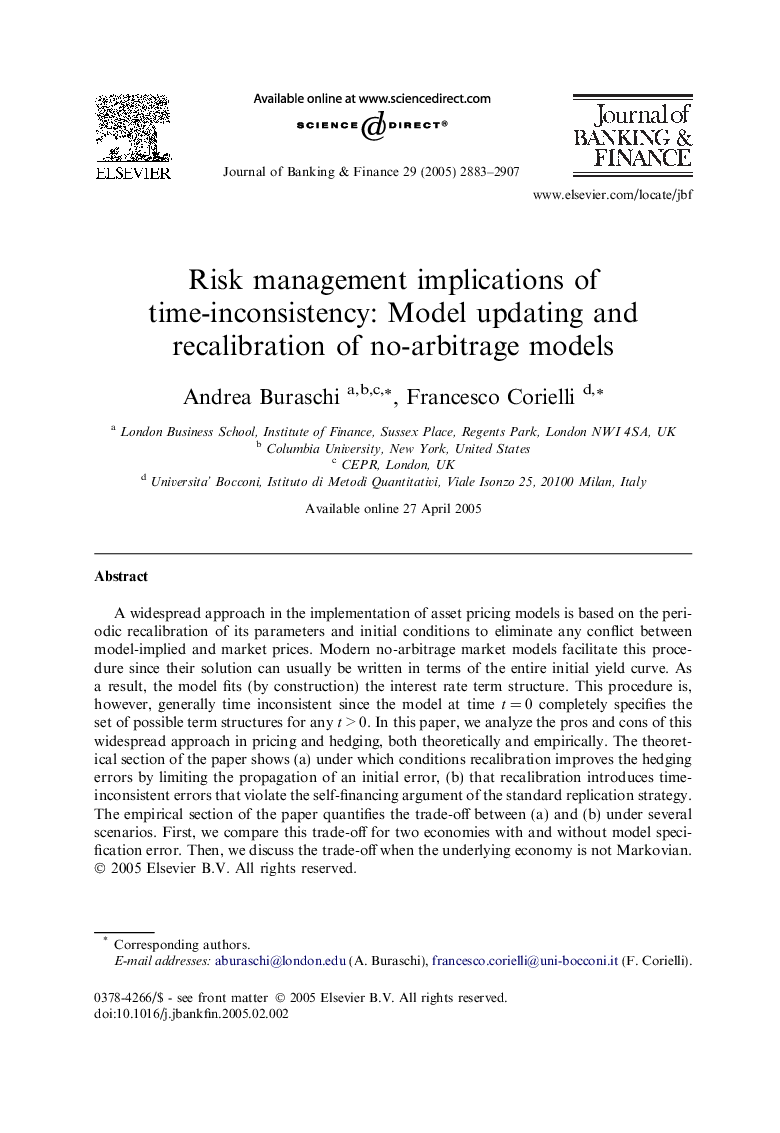| Article ID | Journal | Published Year | Pages | File Type |
|---|---|---|---|---|
| 5091478 | Journal of Banking & Finance | 2005 | 25 Pages |
Abstract
A widespread approach in the implementation of asset pricing models is based on the periodic recalibration of its parameters and initial conditions to eliminate any conflict between model-implied and market prices. Modern no-arbitrage market models facilitate this procedure since their solution can usually be written in terms of the entire initial yield curve. As a result, the model fits (by construction) the interest rate term structure. This procedure is, however, generally time inconsistent since the model at time t = 0 completely specifies the set of possible term structures for any t > 0. In this paper, we analyze the pros and cons of this widespread approach in pricing and hedging, both theoretically and empirically. The theoretical section of the paper shows (a) under which conditions recalibration improves the hedging errors by limiting the propagation of an initial error, (b) that recalibration introduces time-inconsistent errors that violate the self-financing argument of the standard replication strategy. The empirical section of the paper quantifies the trade-off between (a) and (b) under several scenarios. First, we compare this trade-off for two economies with and without model specification error. Then, we discuss the trade-off when the underlying economy is not Markovian.
Related Topics
Social Sciences and Humanities
Economics, Econometrics and Finance
Economics and Econometrics
Authors
Andrea Buraschi, Francesco Corielli,
